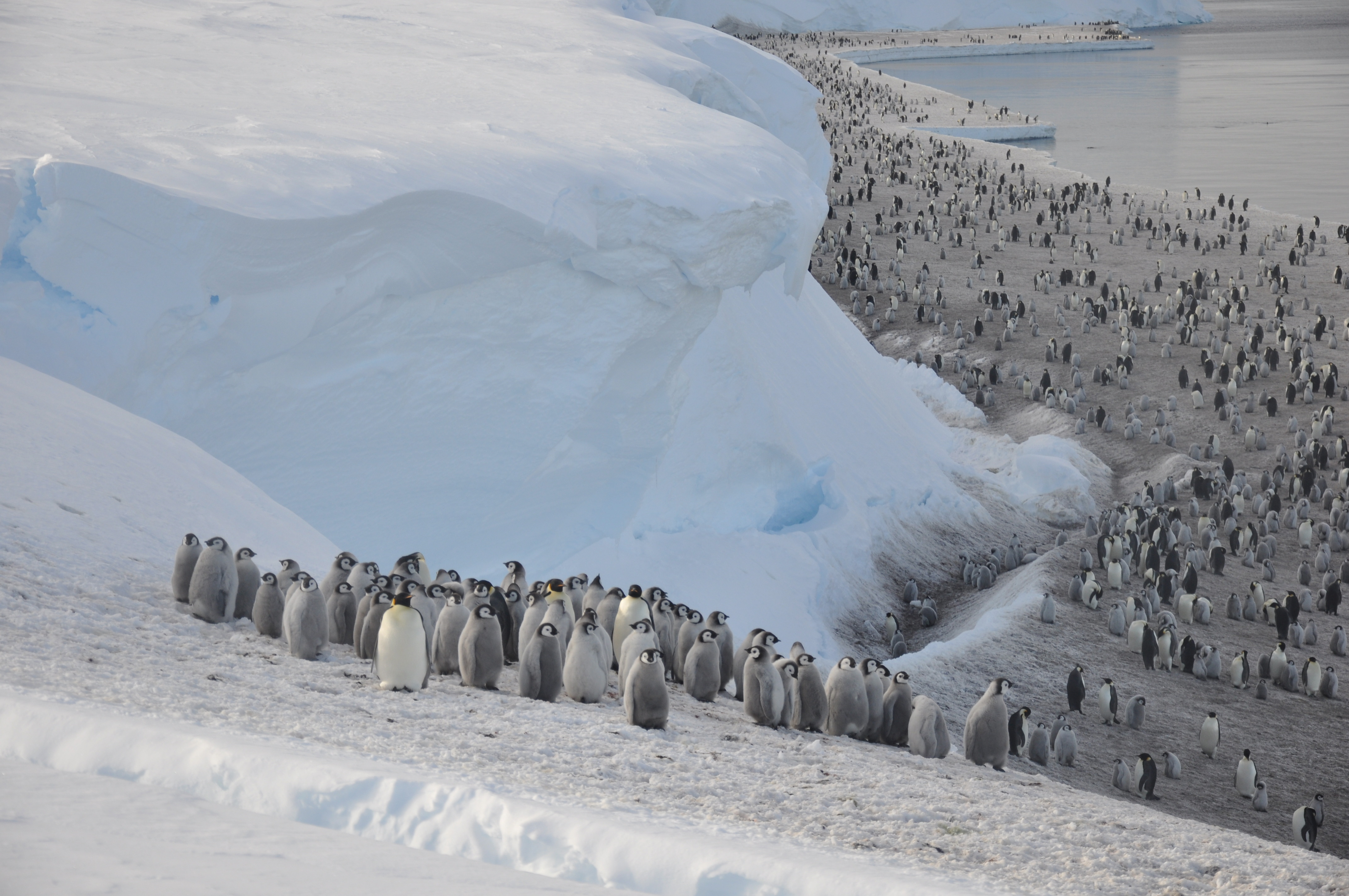Satellite images show a dramatic decline in Antarctica's emperor penguin population — and it's happening faster than we thought (photos)
One region of the continent saw a 22% decline in emperor penguin numbers over 15 years.

We're witnessing a march of the penguins — not to the edge of the ice, but to extinction.
According to new research by the British Antarctic Survey (BAS), the population of emperor penguins in western Antarctica is declining faster than our most pessimistic predictions.
Using satellite images to survey colonies across the Antarctic Peninsula, the Weddell Sea and the Bellingshausen Sea, BAS researchers determined that the emperor penguin population in the region decreased by 22% between 2009 and 2024.
By contrast, the previous estimated global population decline, dating to the period between 2009 and 2018, was just 9.5%. The new work suggests that emperor penguins could approach extinction around the year 2100.

Emperor penguins face numerous challenges for breeding success, from changes in weather patterns to increased competition for food to increased levels of predation. And, of course, there's the issue of climate change. The seabirds are reliant upon Antarctica's seasonal sea ice for mating and rearing chicks, and in recent years, some areas of that sea ice have become more unstable — and a warming world could be partially to blame.
"The fact that we're moving to a position faster than the computer models project means there must be other factors we need to understand in addition to loss of breeding habitat," BAS emeritus fellow Phil Trathan said in a statement.
"The only way we'll see a turnaround for the population is if we stabilize greenhouse gas emissions. If we don't, we'll probably have relatively few emperor penguins left by the turn of this century," he added.
Breaking space news, the latest updates on rocket launches, skywatching events and more!
The slightly optimistic news is that this drastic rate of decline has so far been observed only in one region of Antarctica. But that region is home to 30% of the global emperor penguin population.
"There's quite a bit of uncertainty in this type of work and what we've seen in this new count isn't necessarily symbolic of the rest of the continent," said BAS scientist Peter Fretwell. "But if it is — that's worrying because the decline is worse than the worst-case projections we have for emperors this century."

BAS will be conducting satellite research across the Antarctic continent to determine the emperors' global rate of decline — and hopefully they'll have some better news.
A paper on the research was published Tuesday (June 10) in the journal Nature Communications: Earth & Environment.

Space.com contributing writer Stefanie Waldek is a self-taught space nerd and aviation geek who is passionate about all things spaceflight and astronomy. With a background in travel and design journalism, as well as a Bachelor of Arts degree from New York University, she specializes in the budding space tourism industry and Earth-based astrotourism. In her free time, you can find her watching rocket launches or looking up at the stars, wondering what is out there. Learn more about her work at www.stefaniewaldek.com.
You must confirm your public display name before commenting
Please logout and then login again, you will then be prompted to enter your display name.
